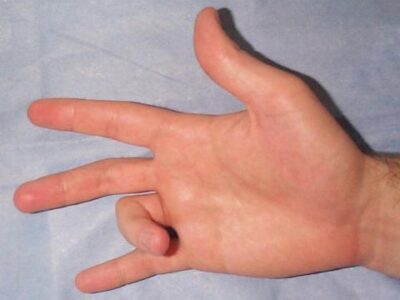From Franciscan Health
Do you have achy joints? Do your knees or hips hurt constantly? If so, you could have osteoarthritis, the most common type of arthritis. Osteoarthritis is described as “wear and tear” on your joints. It’s caused by the breakdown of cartilage between the bones of the joints and tendons, as well as the ligaments around the joints. The culprit can be routine daily activities or sudden injuries.
Osteoarthritis typically affects your knees and hips, but may also impact your hands, lower back and neck. Severe osteoarthritis can make daily tasks, including walking and standing, difficult.
Who’s At Risk for Osteoarthritis?
According to John McClellan, MD, an orthopedic surgeon with Specialty Physicians of Illinois, LLC, an independent physician who practices at Franciscan Health Olympia Fields, nearly everyone has some risk of developing osteoarthritis.
“The lifetime risk of developing osteoarthritis is fairly high in both men and women.”
There are several risk-boosting factors for osteoarthritis:
- aging
- family history
- obesity
- previous joint injury
- joint deformity
Pain-Reduction Strategies for Aching Joints
“Staying physically active is one of the best things you can do to slow osteoarthritis,” said Lindsay Johnson, PA-C, a physician assistant with Franciscan Physician Network Joint Replacement Surgeons in Carmel, Indiana. “Activity is one of the great components of treatment, especially for the hips and knees — joints that are meant to move.”
If you have osteoarthritis, exercises that keep your joints comfortable are best:
- walking
- swimming/water exercises
- cycling
- elliptical machine
Exercise also contributes to another tactic for reducing your pain and slowing osteoarthritis, maintaining a healthy weight.
“It’s not uncommon for patients preparing for joint replacement surgery to find that losing as little as 20 pounds reduces their symptoms of pain and swelling, enough so that they feel comfortable delaying surgery for a few more years,” said Dr. McClellan.
Don’t expect major changes overnight, however, as symptom improvement takes time, advises Ahmad Salah, DO, a rheumatologist with Franciscan Physician Network in Munster, Indiana.
“I always stress the importance of leading an active lifestyle, exercise, eating right and sleeping well.”
What Osteoarthritis Treatments Are Available?
Your doctor may suggest medication, but there are also non-medication options for your osteoarthritis. A knee brace may reduce pressure on your knees, plus increase support and stability. Physical therapy can improve your range of motion and strengthen the muscles around your joints.
Eventually, osteoporosis will wear away your remaining cartilage, and your joints will grind “bone-on-bone.” The bones may become deformed, or bone spurs could develop. Surgery, or a joint replacement may be recommended based on X-rays.
“Joint replacement is an excellent option, and it’s life-changing for many patients who have limited mobility and pain,” said Dr. Salah. “But it’s a final step in treating osteoarthritis, and that’s why it’s important for patients to actively seek treatment for the disease as early as possible.”










